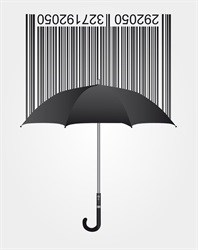Weathering the storm of brand switching
Today consumers switch for a number of reasons:
- They now have true choice;
- There is proper competition at all levels at the premium and low end;
- There is more variety;
- Cheap no longer means inferior quality; and
- Consumers are cash strapped.
Brand loyalty, coupled with price premium gaps, has a tipping point; consumers still prefer to use the brand they grew up with and have an emotional connection to; however when they are in the store the reasons above override their emotional connection.
What has shifted in the market?
Thirty years ago the number of brands available was significantly fewer than today. There were typically two or three top brands with one holding a significant share of the market - then there was everyone else. After 1994 this changed and, for the first time, leading brand players had to learn to compete, not only amongst good local brands, but also with well-known international brands brought in by multinational companies entering South Africa.
In the 1990s consumers were very brand loyal. Very rarely did a cheaper brand come in and deliver, and when it did the quality was usually inferior. When the consumer switched and had a bad experience, that product was not tried again. In this era it was easy for the upper LSM to switch and go back to buy what they liked if they had a bad experience. In the middle to lower LSM, they did not switch, but would rather buy a smaller or bigger pack of what they knew, liked and trusted.

After 2000 it all shifted
Consumer experiences and perceptions shifted markedly. Retailer-owned brands' market share increased as retailers focused on specific categories and improved the quality of their products. The consumer also realised that spending on a cheaper product did not mean it was bad and brand switching became more acceptable. And this switching started happening at all LSM levels.
Post-2010 the middle- to lower end-income consumer became open to brand trial. On the formal side the trade started promoting number two and three brands more frequently to change the balance of power and to encourage trial. Informal traders also brought in smaller leading brands and foreign (unknown) products - and this is where the risk lies for brands today. These products come in very cheap and their quality is good. At this level the consumer is more cash strapped, so the choice is to have some product - even if it is not a product they are familiar with - or no product at all. It is an all or nothing in their world. So, in essence, the price value equation has been totally turned on its head.
From a trade side, the price and value gap between well-known and unknown brands was not equal; cheaper but good quality brands offered a far more competitive margin.
How can brands deal with this shift and maintain customer loyalty?
- Review commercial models - from a retailer perspective, brands need to review their commercial model that engages the trade. The reason why smaller products have been able to enter the market, no matter what the category or type of trade - formal or informal - is they are a function of the amount of money they make per unit sold. Branded products are used to dealing with the trade by volume and, therefore, believe the retailer should be grateful for making a 1% margin. But this maths doesn't add up anymore. Because the trade is no longer selling the huge volumes it used to, it needs to offset it somehow.
- Resources review - brands must review how they measure the capabilities of their sales and key account level staff across the whole chain, whether informal or formal. At key account level these individuals are not numerically experienced enough to have a decent dialogue with a buyer that is putting them under pressure.
- Allow consumers to participate - from a consumer perspective the price value equation has gone out the window mainly in the informal market - from the wholesaler right down. Right now these consumers have left the category, but if brands could find pack format sizes, price options and equations that give the consumer the ability to participate or continue participating in their brand, they could compete more effectively.
- Alignment is the key - brands must move away from looking at their strategy at the consumer level only, which ultimately leaves it up to the customer and the consumer to make the choice. They can't afford the luxury of marketing, sales, commercial models and distribution to not be aligned. The relative importance of trade and distribution carry more weight than in the past and can have a significant impact on brand growth and market share.
About Sane Mdlalose
View my profile and articles...